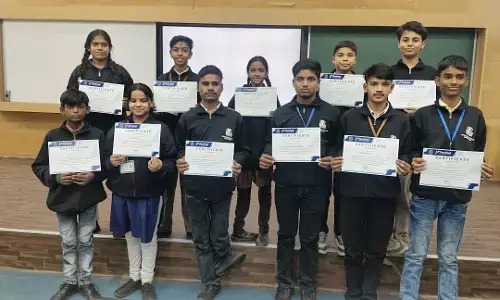Conflicts at Work...

Conflicts At Work... What are your feelings when you see this word? Sadness??? Frustration??? Anger??? Irritation??? Acceptance??? It is often said that conflicts at work and also in life, today, are inevitable.
.jpg) What are your feelings when you see this word? Sadness??? Frustration??? Anger??? Irritation??? Acceptance??? It is often said that conflicts at work and also in life, today, are inevitable. One cannot avoid them and only can resolve them ineffectively or effectively, either destructively or constructively! A conflict is a deliberate and conscious intent to oppose another.
What are your feelings when you see this word? Sadness??? Frustration??? Anger??? Irritation??? Acceptance??? It is often said that conflicts at work and also in life, today, are inevitable. One cannot avoid them and only can resolve them ineffectively or effectively, either destructively or constructively! A conflict is a deliberate and conscious intent to oppose another.Conflicts get created when two or more individuals oppose one another in a personal or professional or social situation. This happens when the individuals need to work together but may have different goals. This also happens when the both individuals want the same thing that is scarcely available.
Every individual always aspires to maximize his/her gain in any situation, sometimes even without due consideration at the expense of another person involved in the same situation. This invariably leads to a struggle to wanting self to win and keeping others from achieving their win, thus resulting in a conflict.
Thus we have to accept that in teams and organisations, conflicts are a normal phenomenon since every individual has his or her own views and when the views of two persons disagree a conflict situation may arise. Conflicts also occur when two or more values, perspectives and opinions are contradictory in nature and have not been aligned or agreed to or when we come across a situation in which some one believes that his or her own needs have been denied or one in which people, groups are involved in a serious disagreements.
When these happen, feelings of anger and frustration worsen a conflict situation. In an organisation, conflicts also happen due to incompatible goals and timelines / deadlines, overlapping authority, inconsistencies in statuses and messages, task interdependencies and relationships, scarcity of time and resources, or non-agreeable reward systems.
These conflicts when not handled well end up creating destructiveness in the team. This diverts energy from the real task, destroys morale, polarises individuals and groups, deepens differences, obstructs cooperative action, produces irresponsible behaviour, creates suspicion and distrust and decreases productivity.
Conflicts however, when handled properly can also be very constructive. They can open up an issue in a confronting manner, develop clarification of an issue, improve problem-solving quality, provide more spontaneity in communication, increase involvement, initiate growth, strengthen a relationship and help increase productivity.
 Some of the techniques that can be used to resolve conflicts constructively and effectively are: Avoiding: Retreating from an actual or potential situation. Turtles withdraw into their shells to avoid conflicts. They give up their personal goals and relationships. They stay away from the issues over which the conflict is taking place and from the persons they are in conflict with. Turtles believe it is hopeless to try and resolve conflicts. They feel helpless.
Some of the techniques that can be used to resolve conflicts constructively and effectively are: Avoiding: Retreating from an actual or potential situation. Turtles withdraw into their shells to avoid conflicts. They give up their personal goals and relationships. They stay away from the issues over which the conflict is taking place and from the persons they are in conflict with. Turtles believe it is hopeless to try and resolve conflicts. They feel helpless.They believe it is easier to withdraw (physically and psychologically) from a conflict than to face it. Accommodating: Emphasising areas of agreement and de-emphasising areas of difference over conflicting areas. To teddy bears the relationship is of great importance while their own goals are of little importance. Teddies want to be accepted and liked by other people. They think that conflict should be avoided in favour of harmony and that people cannot discuss conflicts without damaging relationships. They are afraid that if a conflict continues, someone will get hurt and that could ruin the relationship.
They give up their goals to preserve the relationship. They like to smooth things over. Compromising: Searching for solutions that bring some degree of satisfaction to the conflicting parties. Foxes are moderately concerned with their own goals and their relationships with others. They give up part of their own goals and persuade others in a conflict to give up part of theirs.
They seek a conflict solution in which both sides gain something - the middle ground between two extreme positions. They compromise; they will give up a part of their goal and relationship in order to find agreement for the common good. Competing: Exerting one’s viewpoint at the potential expense of another – often open competition and a win-lose situation. Sharks try to overpower opponents by forcing them to accept their solutions to the conflict.
Their goals are highly important to them and relationships of minor importance. They seek to achieve their goals at all costs. They are not concerned with the needs of others. They do not care if others like or accept them. Sharks assume that conflicts are either won or lost and they want to be the winner. This gives them a sense of pride and achievement. Losing gives them a sense of weakness, inadequacy and failure.
They try and win by attacking, overpowering, overwhelming and intimidating others Collaboration: Addressing a disagreement directly and in a problem-solving mode – the affected parties work through their disagreement. Owls highly value their own goals and relationships.
They view conflicts as problems to be solved and seek a solution that achieves both, their own and the other person's goals. Owls see conflicts as a means of improving relationships by reducing tension between two people. They try to begin a discussion that identifies the conflict as a problem to be solved. By seeking solutions that satisfy everyone, owls maintain the relationship.
They are not happy until a solution is found that both satisfies everyone's goals and resolves the tensions and negative feelings that may have been present. Let conflicts happen... resolve them constructively! You have the power! The author is an International Trainer & Inspirational Speaker.
Next Story

















